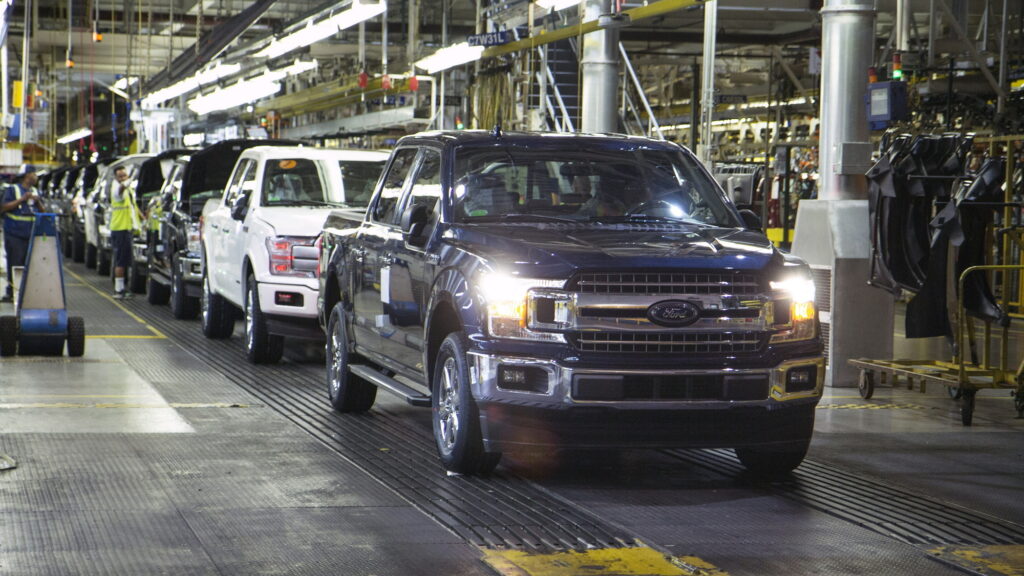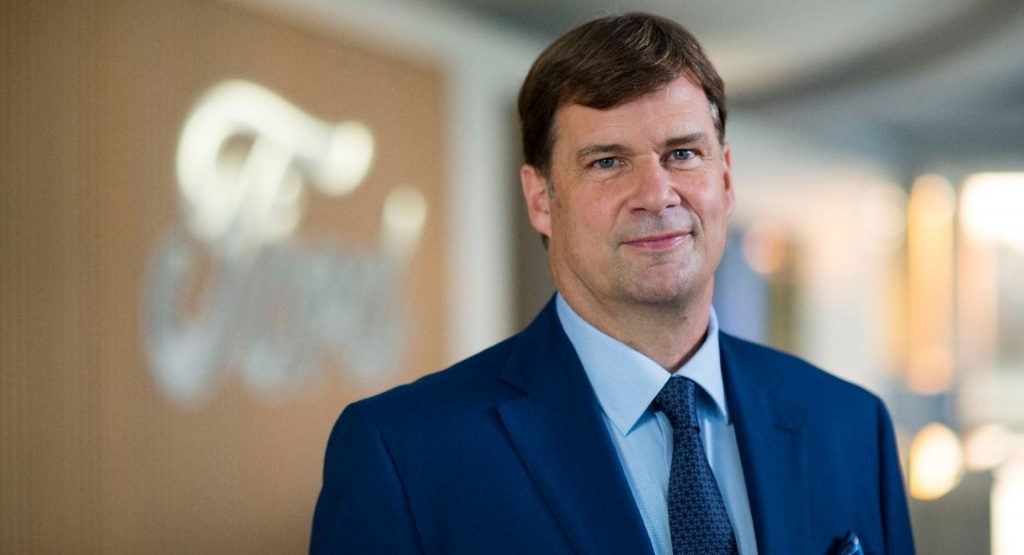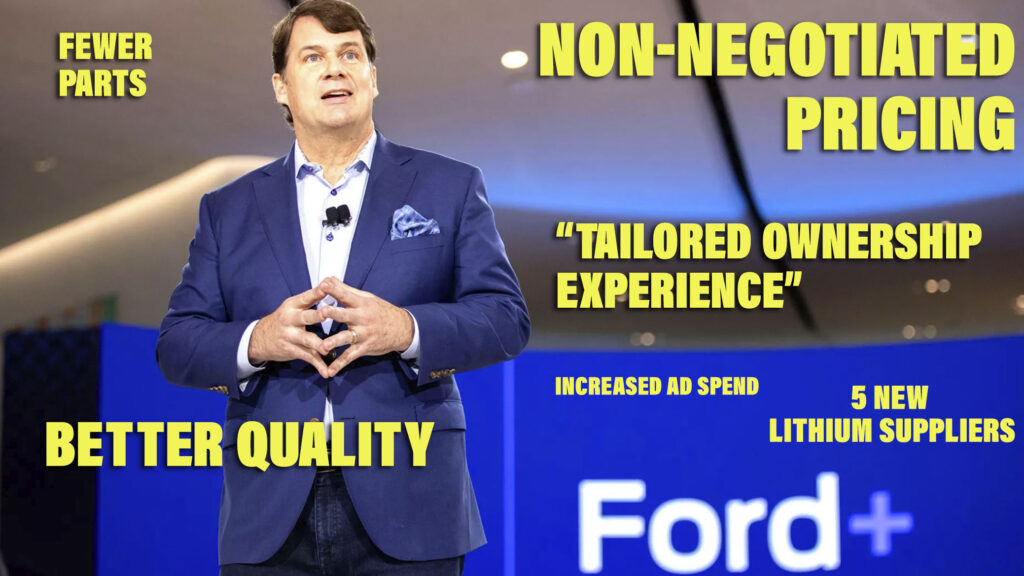At a shareholder event on Monday, Ford’s CEO Jim Farley outlined the company’s plans as it enters an age of ambitious growth across its three business segments, which include combustion, electric, and commercial divisions.
Farley promised changes in how Ford does business, with the company no longer willing to “jockey” for market share. He also promised to cut costs but improve quality to reduce warranty claims. Increasing the company’s marketing spend on ICE vehicles was also highlighted, with the profits generated going towards the development of EVs.
The assurances and change in strategy come off the back of mixed first-quarter earnings. The headline figure for Q1 was that the Blue Oval’s EV division, Ford Model e, was losing close to $60,000 per vehicle sold, while Ford Blue and Ford Pro (the ICE and commercial arms, respectively) were continuing to generate profit.
A Leaner Mode Of Operations

Going forward, one of Ford’s strategies will be to focus on software and improve its product mix, increasing profitability rather than being stretched thin in what they offer. “The days of being all things to all people are over at Ford,” said Jim Farley. He says he wants to offer customers “tailored ownership experiences” instead of the company “jockeying for slivers of share with complex hardware in over-served vehicle categories.”
Related: Ford Wants To Stand Out In The EV Race With A New 7-Seater SUV
An example of such an over-served vehicle category was outlined earlier by Farley last week when he said he expects some 45 two-row, five-seat EV SUVs to be on the market by 2025. It could also mean exiting other less profitable vehicle segments, similar to how the company abandoned the sedan body style when it ceased production of the Fusion in 2020.
Improving Quality While Cutting Costs

Ford wants to reduce warranty claims, something that CEO Farley has been critical of in the past. Kumar Galhotra, president of Ford Blue, spoke about how his unit is improving the quality of parts as part of this endeavor. During the development of the new Super Duty, Galhortra claims that the company is now testing parts until they fail before identifying weak points and fixing them. Previously, Ford would clear a part for use if it met its standard.
While on the surface, this may not seem like a cost-cutting measure, if it can effectively reduce the need for part replacement due to premature failure, it will have significant long-term benefits for the company. Ford is also looking at reducing the number of parts found in its ICE vehicles as a further way of cutting costs. According to Yahoo Finance, the new F-150 that is set to debut later this year will have 2,500 fewer parts than its predecessor.
New Car Value Dropping By 5 Percent, And Ford’s Non-Negotiated Pricing

Farley says that Ford will be switching to non-negotiated pricing, reiterating the stance that he took in 2022. It mirrors the strategy that Tesla employs, with changes likely coming to Ford dealerships which will be expected to have low (or none at all) inventory, with online sales the norm. It will also avoid the infamous dealer markups that have plagued some of Ford’s more popular models, such as the F-150 Lightning and Bronco Raptor.
See Also: Ford Is Losing Almost $60,000 For Every EV It Sells
In the meantime, the company expects to see dealer inventories grow and auto prices fall this year. Speaking to Bloomberg, the Ford CEO said the company expects to cut prices by “5-percent-plus.” Additionally, advertising spend will go up, with Farley claiming the company hasn’t invested enough in marketing its gas-powered models.
Selling ICEs is crucial to Ford’s long-term success, as fossil-fuel-powered cars continue to finance the company’s $50 billion EV rollout plan. For Ford Model e, there is some good news on the horizon financially. With new and revamped plants for EV production coming online, they will require 30 percent fewer labor overheads than ICE plants. Ford doesn’t expect any decline in factory workers, though, with more people needed to work in battery and other new EV plants.
New Lithium Supplies Come At The Right Time

Ford also used the investor day to announce that it had signed deals with five new Lithium suppliers. The companies source their raw materials from the U.S., Canada, and Chile, which crucially means that Ford EVs will qualify for the Biden Administration’s EV tax credits as mandated by the inflation reduction act.
The flurry of deals should put the automaker well ahead of other automakers looking to take EVs seriously, notes David Deckelbaum, a TD Cowen analyst. And according to Farley, the signings will allow Ford to reach its 2026 production goal of 2 million EVs by the end of 2026.
While Ford’s plans sound good, it remains to be seen if it’s enough to convince shareholders plagued by skeptical thinking over the company’s EV strategy. Bloomberg reports that the company’s stock rose less than 1 percent in premarket trading. “I’m not here to tell you that we’re undervalued,” Farley said. “You make your own decision.”





